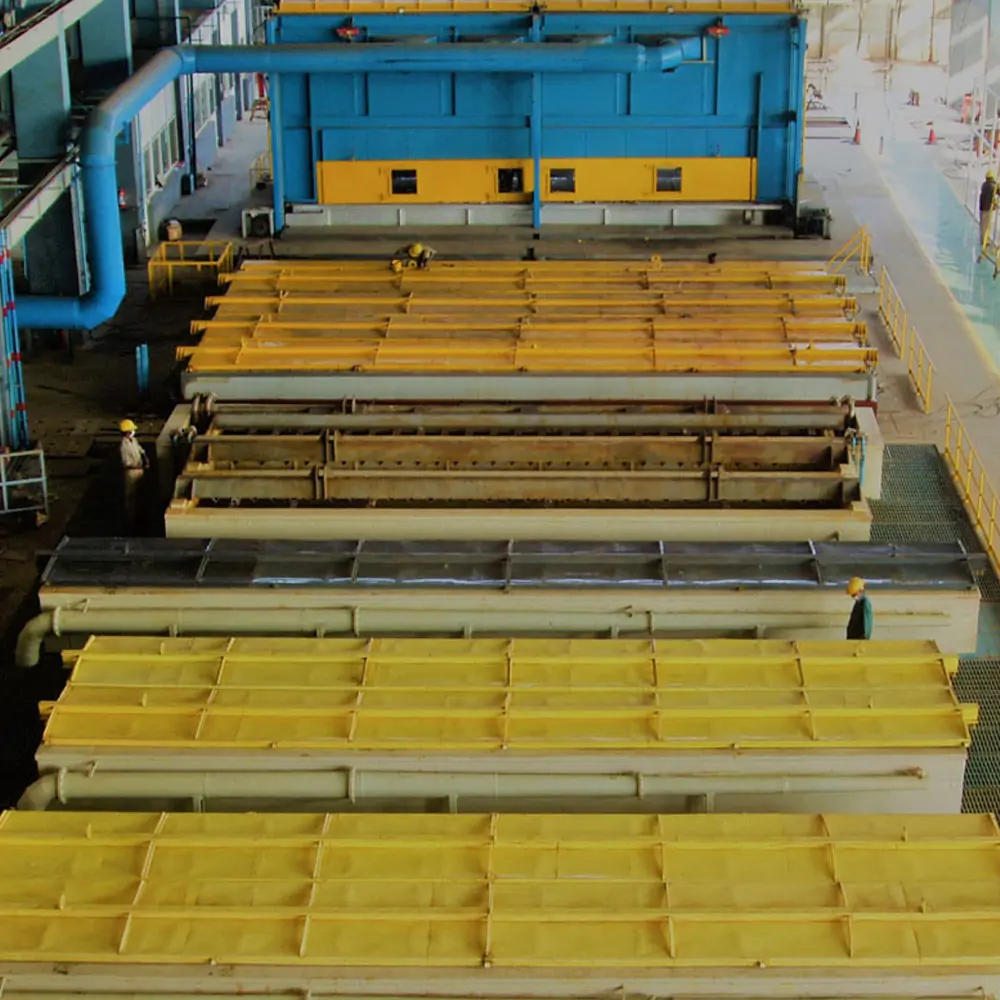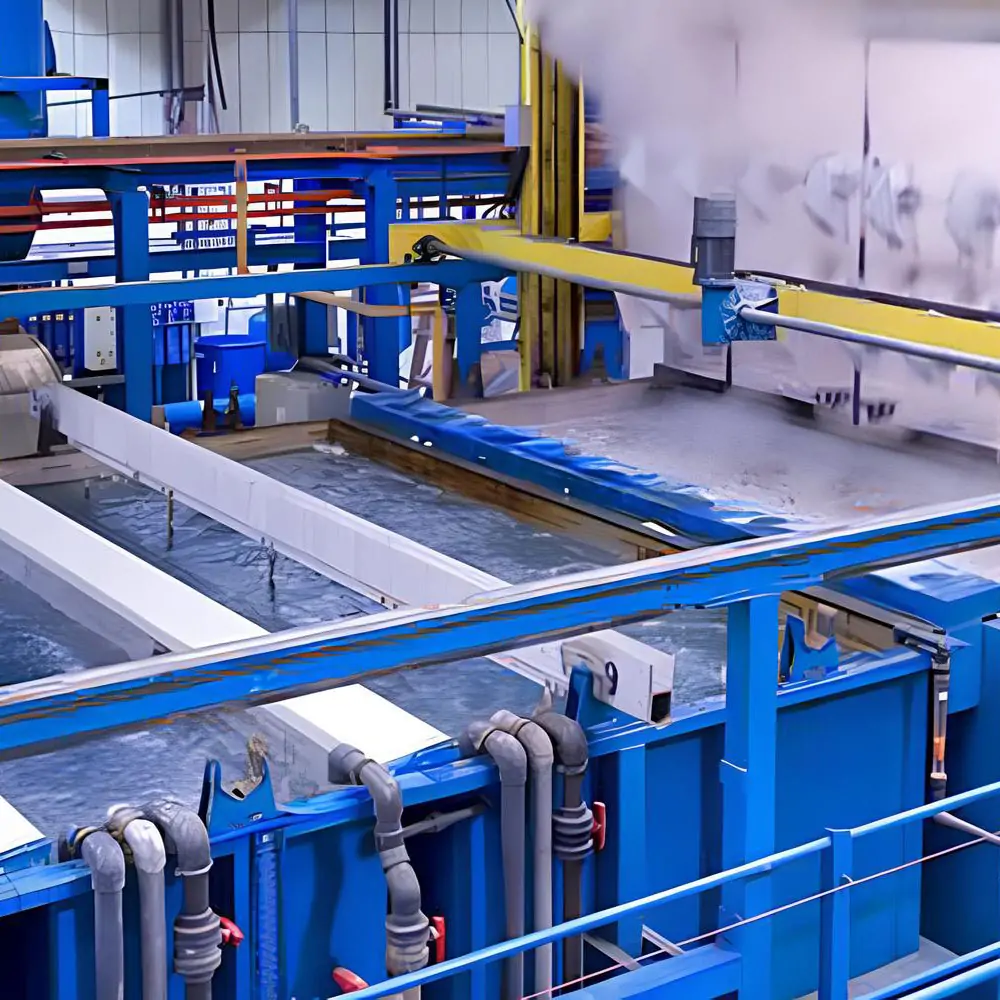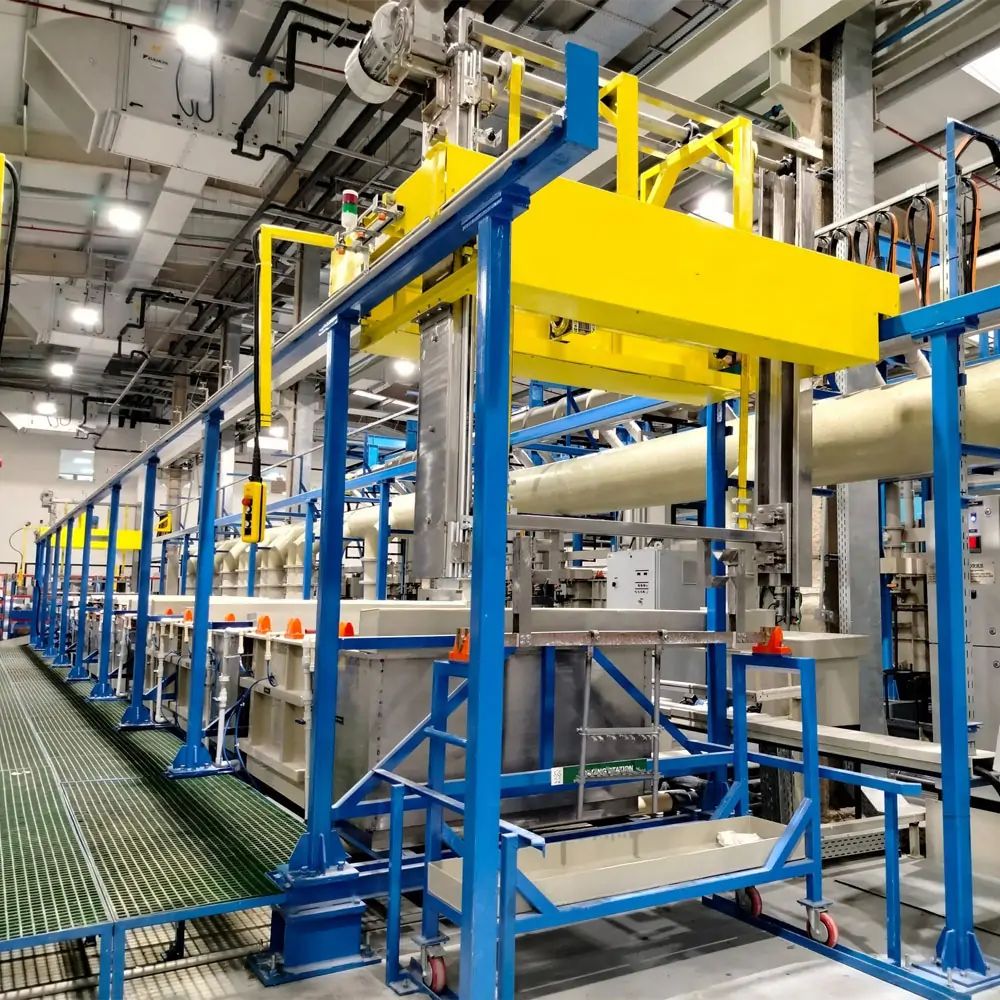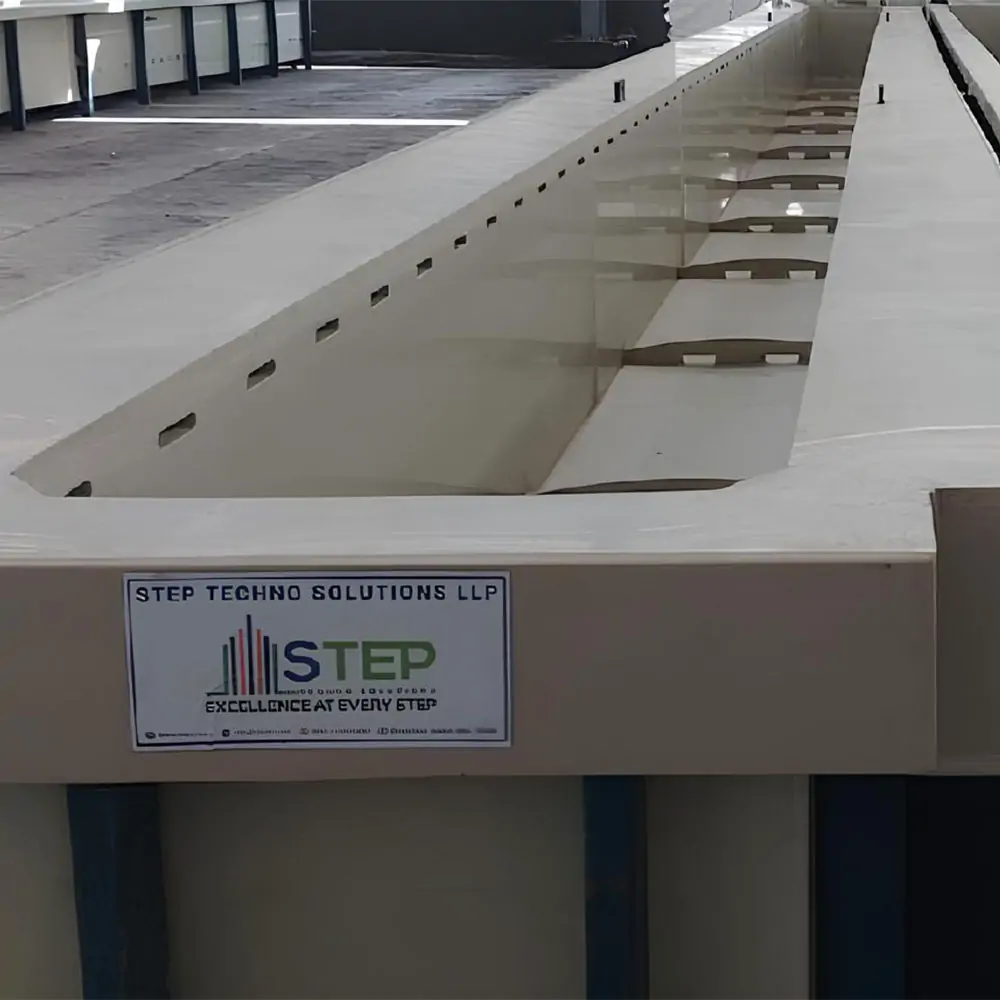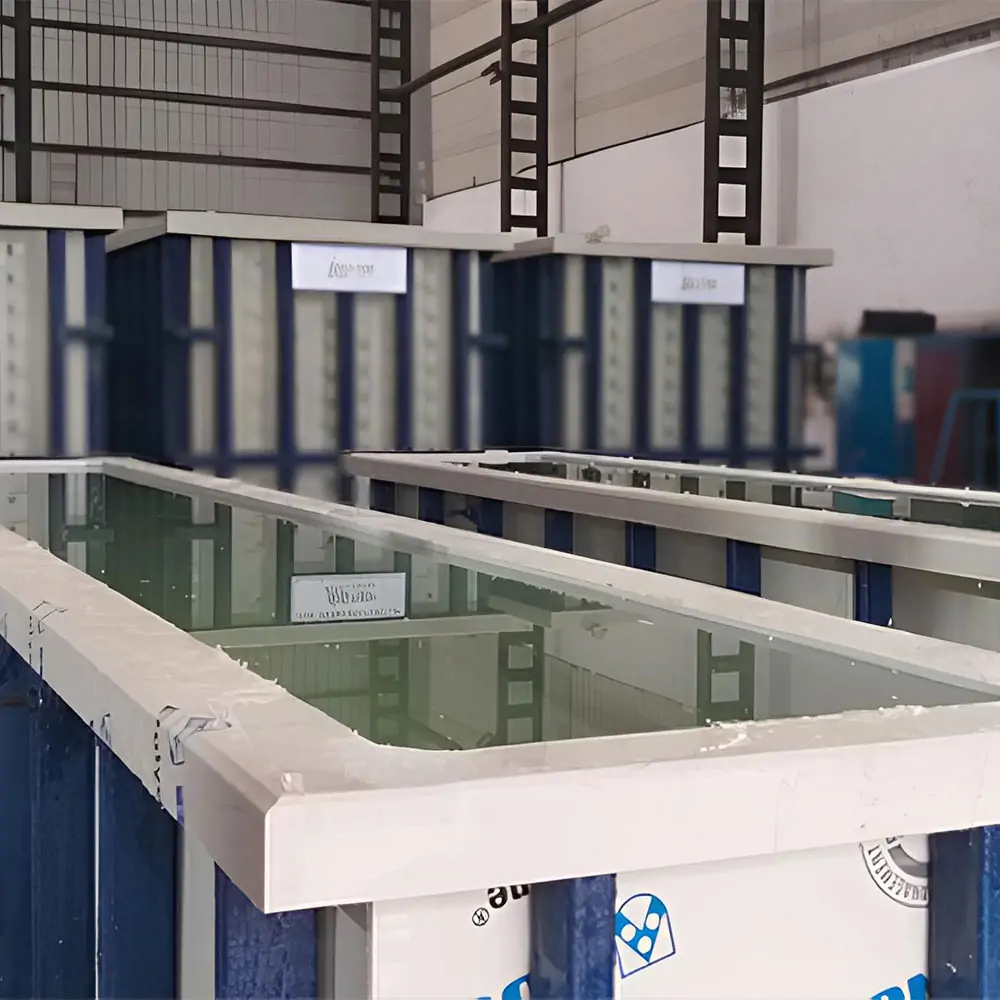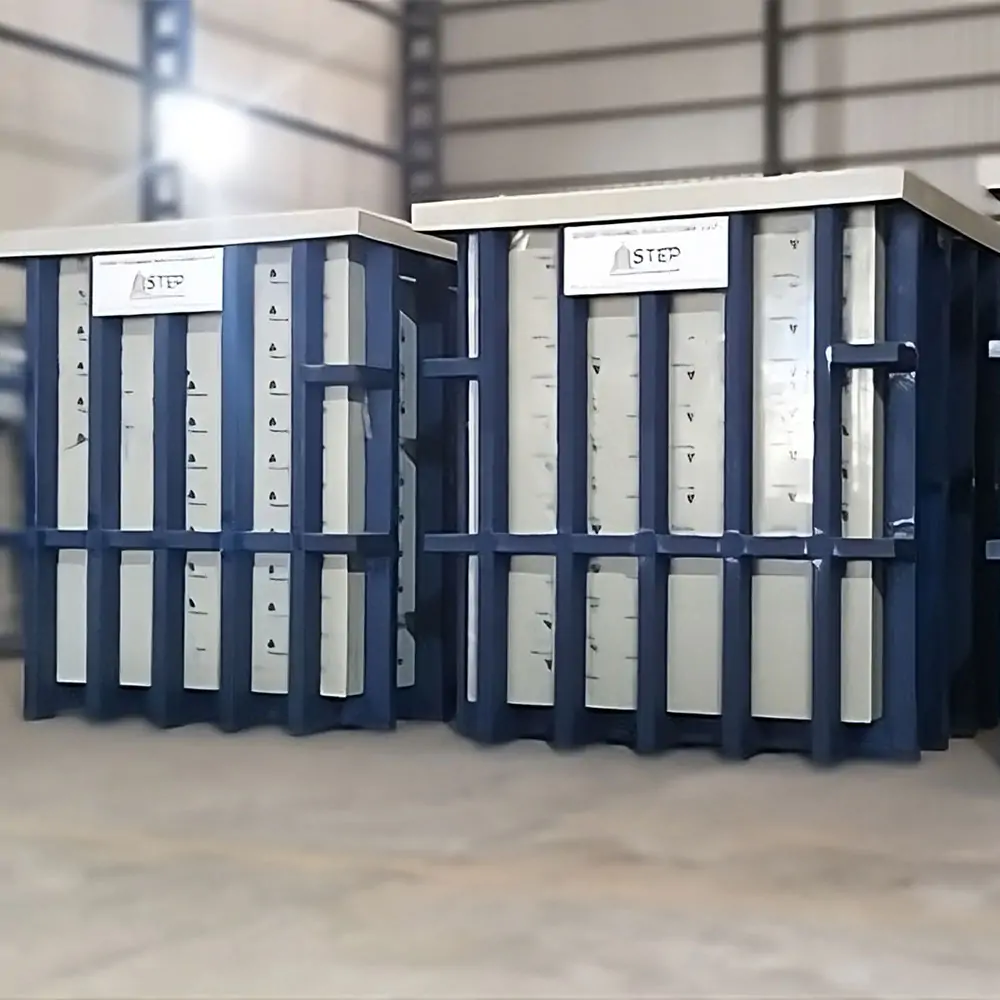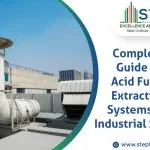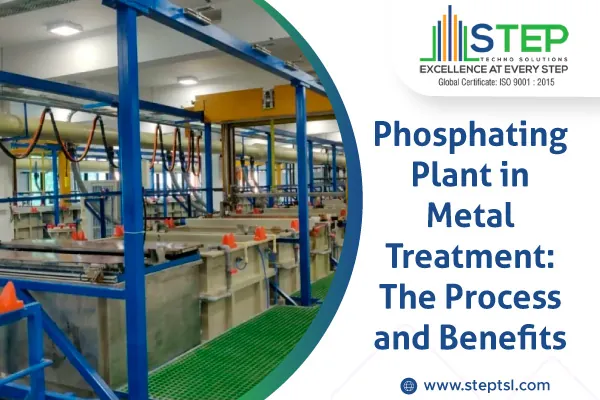Phosphating is an important chemical procedure in metal treatment that improves the surface characteristics of metal items. It enhances durability, corrosion resistance, and the adhesion of coatings, making it an essential step in industries requiring long-lasting metal components. The process involves applying a phosphate coating that forms a protective layer on the metal surface, shielding it from wear, rust, and other environmental factors. Phosphating is widely used to prepare metals for painting and coating applications, ensuring better adhesion and a more durable finish. Here we’ll explore the role of phosphating plants in metal treatment, the different stages of the process, its benefits, and various types of phosphating, such as zinc, manganese, and iron phosphating. Additionally, we will look at how this process is applied across industries such as automotive, aerospace, and construction for improved metal performance and longevity.
Phosphating Plant in Metal Treatment
A phosphating plant is a specialized setup designed to apply phosphate coatings to metal surfaces. The phosphating process involves creating a chemical reaction between metal surfaces and phosphoric acid, forming a phosphate layer that provides improved protection against corrosion and enhances the adhesion of paints and coatings. The process is essential in various industries that require metal parts to be durable, corrosion-resistant, and suitable for further processing like painting or coating.
Phosphating is a popular choice because it is cost-effective and environmentally friendly compared to other surface treatment methods like plating or painting. It provides excellent adhesion properties and is highly effective in protecting metals from rust and corrosion.
Importance of Phosphating Process in Metal Treatment
Phosphating plays a vital role in metal treatment by improving the properties of metal surfaces. The phosphate coating acts as a barrier against moisture, salts, and other corrosive agents, which would otherwise lead to rust and degradation of the metal. It is especially important in industries where metals are exposed to harsh environmental conditions, as the phosphate layer prevents early deterioration.
Phosphating also prepares the metal surface for subsequent treatments, such as painting or coating, by increasing the adhesion of these coatings. It improves the look and performance of the metal pieces. Overall, phosphating is a cost-effective and efficient method to improve the performance, durability, and longevity of metal components.
The Process of Phosphating Plant
The phosphating procedure generally consists of the following phases: pre-treatment, phosphating, and post-treatment. Each of these stages ensures that the metal parts receive a high-quality phosphate coating that adheres well and provides long-lasting protection. Here’s a breakdown of the process:
Pre-treatment Stage
Before starting the phosphating process, the metal surface must be effectively prepped. This is done through cleaning and degreasing, followed by pickling.
- Cleaning and Degreasing : The first step is to clean the metal surface of any oils, dirt, grease, or other contaminants. This is done using alkaline or solvent-based cleaning solutions, which ensure that the metal is free of substances that could interfere with the phosphating process.
- Pickling : After cleaning, the metal is subjected to pickling. This involves using an acidic solution to remove any scale, rust, or oxides from the surface. Pickling ensures that the metal is perfectly clean and ready for the phosphating treatment.
Phosphating Stage
The phosphating stage is where the actual application of the phosphate coating takes place. This stage is essential for deciding the quality and strength of the coatings.
- Chemical Bath : The cleaned and pickled metal parts are immersed in a phosphating bath, which contains a mixture of phosphoric acid and other chemicals. This solution facilitates chemical reactions on the metal surface, resulting in the building up of a phosphate layer.
- Application Methods : The phosphate coating can be applied using several methods, including immersion, spraying, or roller coating. The method used will depend on the size and shape of the parts being treated and the specific requirements of the process.
- Reaction Process : During the phosphating process, the phosphoric acid reacts with the metal surface, forming a thin crystalline phosphate layer. This layer bonds to the metal, creating a protective barrier that prevents corrosion and improves the adhesion of paints and other coatings.
Post-treatment Stage
After the phosphating process, the metal parts undergo a post-treatment phase that involves rinsing and drying.
- Rinse : The metal parts are rinsed thoroughly to remove any excess chemicals or residual phosphating solution. This ensures that the surface is clean and ready for the next stage of the manufacturing process.
- Drying : After rinsing, the metal pieces are dried in order to remove any residual moisture.. The drying process is crucial for ensuring that the phosphate coating adheres properly and that no water remains on the surface, which could lead to corrosion.
Types of Phosphating
There are three primary types of phosphating processes used in metal treatment: zinc phosphating, iron phosphating, and manganese phosphating. Every type provides distinct advantages and is best suited for certain purposes.
- Zinc Phosphating : Zinc phosphating is the most commonly used form of phosphating. It involves laying down a phosphate coating consisting of zinc or phosphate nanocrystals. This type of coating provides excellent corrosion resistance and is often used in the automotive, aerospace, and construction industries. Zinc phosphating also improves the adhesion of paints and coatings, making it ideal for parts that will undergo further finishing.
- Iron Phosphating : Iron phosphating is typically used for light-duty applications, where corrosion resistance is less critical. The phosphate coating formed during the process is composed of iron phosphate crystals. While it provides basic corrosion protection, iron phosphating is often used for parts that will not be exposed to harsh conditions or in cases where cost savings are a priority.
- Manganese Phosphating : Manganese phosphating provides a more durable and corrosion-resistant coating than zinc or iron phosphating. This type of phosphating process is commonly used for high-performance applications, such as automotive components and heavy-duty machinery. Manganese phosphating offers superior wear resistance and is highly effective in protecting metal surfaces from rust and corrosion in demanding environments.
Benefits of Phosphating Plant in Metal Treatment
Phosphating plants offer numerous advantages in metal treatment, making them an essential part of the manufacturing process. Here are the key benefits:
- Corrosion Resistance : The primary benefit of phosphating is its ability to provide enhanced corrosion resistance. The phosphate coating creates a barrier between the metal surface and external elements such as moisture, air, and chemicals, significantly reducing the risk of rust and degradation.
- Enhanced Paint Adhesion : Phosphating improves the adhesion of paints, coatings, and lubricants to metal surfaces. The phosphate layer creates a rough surface that allows these materials to bond more effectively, leading to a smoother and more durable finish.
- Improved Surface Finish : Phosphating helps improve the overall surface finish of metal components. The process creates a uniform coating that enhances the aesthetic appearance of the metal, making it suitable for a wide range of applications, including those requiring high-quality finishes.
- Increased Durability : The phosphate coating increases the durability of metal parts by providing a hard, protective layer that withstands wear and tear. This makes phosphated metals ideal for use in harsh environments, where they need to endure extreme temperatures, pressures, or chemicals.
- Environmentally Friendly : Phosphating is an environmentally friendly process, as it does not involve the use of harmful chemicals like those used in some other metal treatment methods. Additionally, the process can be easily controlled and adjusted to reduce energy consumption and waste.
Applications of Phosphating Plant in Various Industries
Phosphating plants play a crucial role in various industries by providing effective metal treatment solutions. Some key applications of phosphating include:
- Automotive : Phosphating is widely used in the automotive industry to improve the durability and corrosion resistance of components such as chassis, body parts, and engine components. It also enhances the adhesion of paints and coatings, which are critical for vehicle aesthetics and longevity.
- Aerospace : In aerospace, phosphating is used to protect critical components from corrosion and improve the bonding of paints and coatings. The aerospace industry demands high-quality, durable finishes, and phosphating meets these requirements effectively.
- Construction : Phosphating is used in the construction industry for metal parts exposed to outdoor environments, such as steel beams, frames, and fasteners. The process helps ensure that these parts remain corrosion-resistant, even in harsh weather conditions.
- Electronics : Phosphating is also used in the electronics industry to protect metal components from corrosion and improve their performance. The process is used to treat electronic parts, connectors, and other metal components that are sensitive to environmental factors.
- Chemical Treatments : In industries involved in chemical processing, phosphating helps protect equipment from corrosion caused by exposure to harsh chemicals. It also improves the performance and durability of metal parts used in reactors, pumps, and pipelines.
Who is the Leading Phosphating Plant Manufacturer
STEP® Techno Solutions LLP is a leading phosphating plant manufacturer and exporter, specializing in high-quality and efficient metal treatment solutions. With 20+ years of expertise in the industry, we provide advanced phosphating plants that are designed to improve the surface properties of metal components, offering enhanced corrosion resistance, durability, and improved adhesion of coatings. These plants are widely used in various industries, including automotive, aerospace, and construction, to achieve superior metal finishes and increased product longevity. As a trusted phosphating plant manufacturer, STEP® Techno Solutions LLP assures that each system is designed to meet the specific needs of clients, helping them achieve optimal results in their metal treatment processes. With a focus on quality, innovation, and customer satisfaction, STEP® Techno Solutions LLP continues to be the go-to choice for businesses seeking reliable and cost-effective phosphating solutions.
Conclusion
Phosphating plants play an important role in increasing the quality, longevity, and corrosion resistance of metal components. By applying phosphate coatings, industries can ensure that their products meet the necessary standards for performance, reliability, and aesthetics. The phosphating process, whether it involves zinc, iron, or manganese, offers several benefits, including enhanced paint adhesion, improved surface finishes, and increased durability. As industries continue to focus on sustainability, efficiency, and quality control, phosphating remains a cost-effective and environmentally friendly solution for metal treatment.
For companies looking to improve their galvanizing performance and metal treatment processes, investing in a phosphating plant is a smart decision. To learn more about how phosphating can enhance your operations, contact STEP® Techno Solutions LLP at +91 98988 75757 or email info@steptsl.com. Let us help you with the best phosphating solutions for your business.
FAQ
What is a phosphating plant in metal treatment?
A phosphating plant is a facility that applies a phosphate coating to metal surfaces to improve their corrosion resistance, durability, and adhesion of paints or coatings, enhancing overall metal performance.
What is the role of phosphating in metal treatment?
Phosphating improves the metal surface’s properties by adding a protective phosphate layer, which increases corrosion resistance, enhances paint adhesion, and provides a smoother finish, ensuring longer-lasting performance in various industries.
How does the phosphating process work?
The procedure consists of washing the metal, adding a phosphate solution, and permitting a phosphate layer to build up.This treatment helps protect metals from rust and corrosion and improves their surface quality for coatings.
What are the types of phosphating?
The main types of phosphating include zinc phosphating, iron phosphating, and manganese phosphating. Each type provides different benefits, such as corrosion protection, enhanced paint adhesion, and surface durability, depending on the application.
What industries use phosphating plants?
Phosphating plants are used in industries like automotive, aerospace, construction, electronics, and chemical processing. These industries rely on phosphating for improving metal durability, surface protection, and preparing metals for painting or coating applications.
What are the benefits of using a phosphating plant in metal treatment?
Phosphating plants provide several benefits, including increased corrosion resistance, improved paint adhesion, better surface finishes, and higher durability, making them essential in industries that require long-lasting metal components.
Is phosphating environmentally friendly?
Yes, phosphating is considered environmentally friendly as it doesn’t involve harmful chemicals like some other metal treatments. Modern phosphating processes focus on minimizing waste and energy use, ensuring minimal environmental impact.
How long does the phosphating process take?
The phosphating process typically takes 10 to 30 minutes, depending on the type of metal and the specific phosphating method used. Proper cleaning, application, and drying ensure optimal results during metal treatment.
Can phosphating be used on all metals?
Phosphating performs best on steel and iron, when it may be used on other metals such as aluminum. The treatment enhances the properties of the metal surface, making it more durable and corrosion-resistant.
How does phosphating improve paint adhesion?
The phosphate coating creates a rougher surface on the metal, which helps paint or coatings bond more effectively. This improves adhesion, ensuring a smoother, more durable finish that lasts longer in demanding environments.

